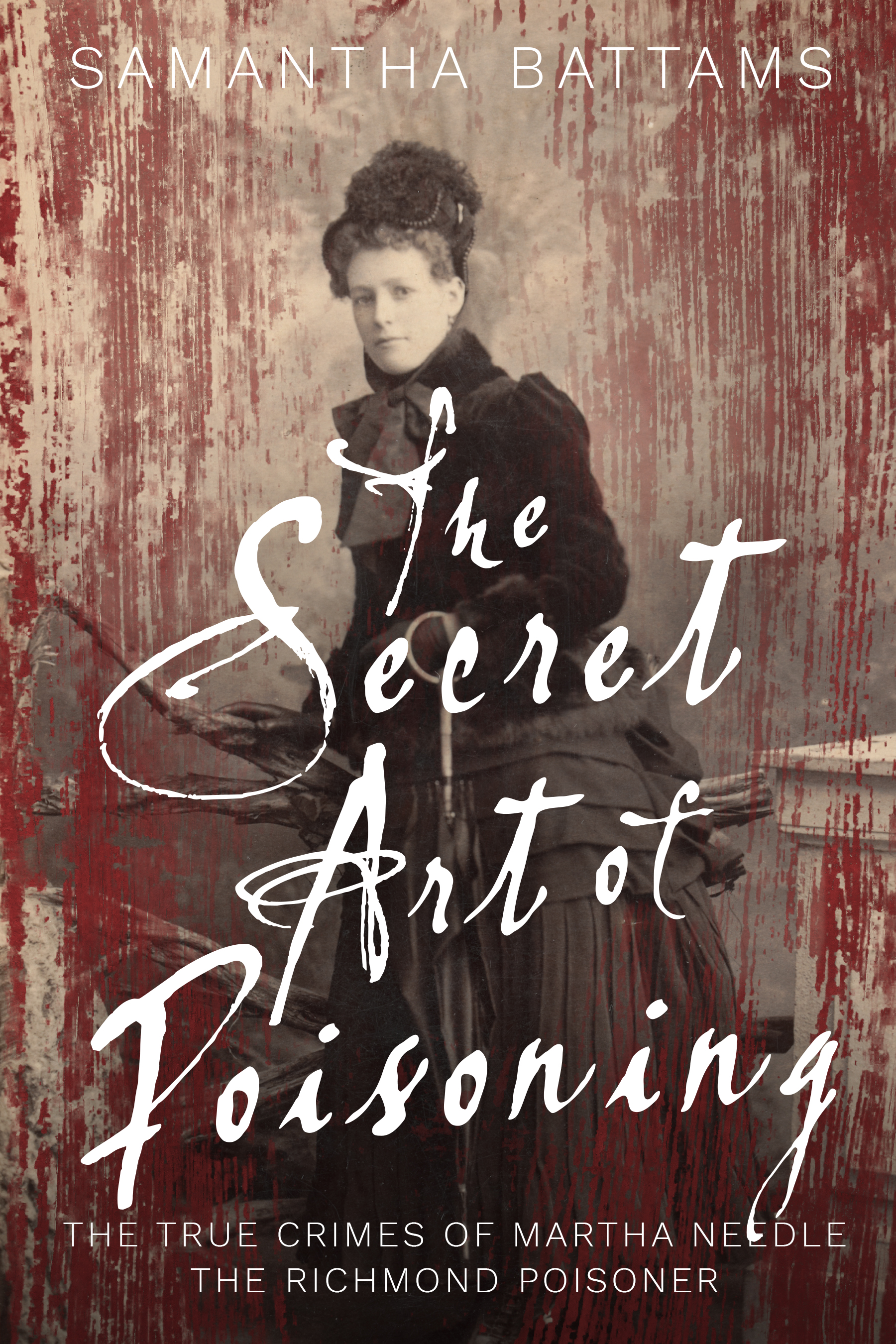Author: Dr Samantha Battams
Publisher/Year: Samantha Battams/2019
Reviewer: Dr Pamela Schulz[1]
This intriguing and well researched book is a tour de force for lovers of murder mysteries, courtroom dramas, history, sociology and intellectual rigour. It considers in detail the trials and tribulations of one Martha Needle who was accused of the murders of her husband, children and her brother in law.
The book is set in the 19th century and is a sorry litany of the dire circumstances that children born or migrated during the early years of colonial South Australia with families who were devastated by poverty ill health and difficult and challenging childhoods. Martha was the daughter of two neglectful and clearly disturbed parents ironically named Mary and Joseph. Like many of the time poorer women sought work and opportunities in the colonies which regularly advertised in Britain for girls in service and women with skills such as cooks and housekeeping. Sunny South Australia seemed to offer a new life and beckoned to many. At this time unwanted babies and children would often be found on baby farms and their neglect and abuse often unnoticed or ignored by authorities.
Martha who was born in 1863 in SA would live in dire circumstances and significant poverty is chronicled marvellously in detail by Dr Battams and gives an astonishing picture of life at a time when children were often seen as nothing but commodities. This is not unusual as this reviewer[2] is aware as even today this can be shown to be the case. The horror of childhood for some children in the 19th Century comes into sharp relief time and time again as Dr Battams takes us down into the lives of the protagonist and her family.
The harrowing story of her sexual abuse at the hands of her stepfather (her biological parent in doubt) and severe domestic violence and overcrowding in poor houses can be a signpost of what is to come for this young woman. In turn she was subjected to bashings bruising and abuse.
The sunshine in her life appeared at one point when she married a fit and handsome carpenter named Henry Needle at Christ Church North Adelaide and had children with him. Alas this sunshine did not last too long as her life progresses to issues related to domestic violence and the fate of destitution replete with her birth family and their dysfunction. Moves between Victoria and South Australia due to the economic circumstances of family life now recur.
This chronicle of life at time when great women were attempting to bring about change and support for women poor Martha appears to miss out. Catherine Helen Spence and Mary Mc Killop shine brightly in the dark days of early colonial life for women and girls. Truly this section alone is worthy of a movie.
When the issue of Martha’s appearance before the Melbourne courts accused of the murder of her husband and two children plus a brother in law the clear bias and social mores of the time appear in newspapers clearly exhibiting the modern tradition of tabloid reporting. Based almost entirely on the notions of emotion, sensation, division, conflict and indeed her own celebrity the newspapers hounded and derided her for her coldness and deadpan manner.
This is also detailed in the meticulous work done by Dr Battams’ research. The tabloid approaches described in detail her former sexual abuse and the violence inflicted upon her…her poverty and dire childhood a lurid story for evening readers. Further indications that she apparently needed money and insurance claims provided even more fodder. During the course of one trial Martha is faced with the prospect of jury bias as David Gaunson her defence counsel famous for representing Ned Kelly, noted the media reporting of the time as “part of a jury that had not yet sat” and also depicting her as “unwomanly”.
It beggars belief that one witness actually was asked if Martha had been at her husband’s beck and call and whether she was a fit wife! Throughout this book the legal issues of the day the notions of child consent in abuse, the failings of evidentiary presentations and the biased reporting of the time shows the modern reader how easily a poor deprived and underprivileged young woman could find her way to the gallows. The really bright sparks of manhood in this amazing journey is the kindness of Otto Juncken friend mentor and lover who supported her to very end of her life. The other is the law reformer Marshall Lyle who attempted to obtain a pardon from the Governor of Victoria by petition in 1894. I thoroughly recommend this book to the reader as a tour de force of history, sociology and legal frameworks which brings to life a day long past with advice and direction for our future considerations.
